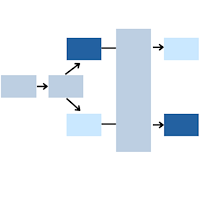Previous Posts
Centering a covariate –a continuous predictor variable–can make regression coefficients much more interpretable. That’s a big advantage, particularly when you have many coefficients to interpret. Or when you’ve included terms that are tricky to interpret, like interactions or quadratic terms. For example, say you had one categorical predictor with 4 categories and one continuous covariate, […]
Statistical contrasts are a tool for testing specific hypotheses and model effects, particularly comparing specific group means.
by Danielle Bodicoat Statistics can tell us a lot about our data, but it’s also important to consider where the underlying data came from when interpreting results, whether they’re our own or somebody else’s. Not all evidence is created equally, and we should place more trust in some types of evidence than others.
The field of statistics has a terminology problem. It affects students’ ability to learn statistics. It affects researchers’ ability to communicate with statisticians; with collaborators in different fields; and of course, with the general public. It’s easy to think the real issue is that statistical concepts are difficult. That is true. It’s not the whole truth, […]
What are goodness of fit statistics? Is the definition the same for all types of statistical model? Do we run the same tests for all types of statistic model?
A regression analysis with one dependent variable and 8 independent variables is NOT a multivariate regression. It's a multiple regression. Multivariate analysis ALWAYS refers to the dependent variable.
Before you can write a data analysis plan, you have to choose the best statistical test or model. You have to integrate a lot of information about your research question, your design, your variables, and the data itself.
Every time you analyze data, you start with a research question and end with communicating an answer. But in between those start and end points are twelve other steps. I call this the Data Analysis Pathway. It’s a framework I put together years ago, inspired by a client who kept getting stuck in Weed #1. […]
A key part of the output in any linear model is the ANOVA table. It has many names in different software procedures, but every regression or ANOVA model has a table with Sums of Squares, degrees of freedom, mean squares, and F tests. Many of us were trained to skip over this table, but
A Gentle Introduction to Random Slopes in Multilevel Modeling …aka, how to look at cool interaction effects for nested data. Do the words “random slopes model” or “random coefficients model” send shivers down your spine? These words don’t have to be so ominous. Journal editors are increasingly asking researchers to analyze their data using this […]


 stat skill-building compass
stat skill-building compass